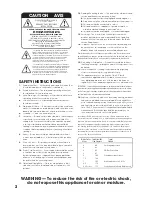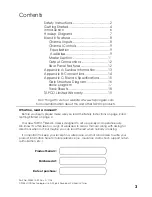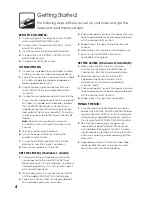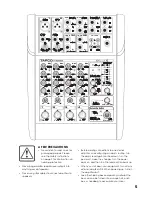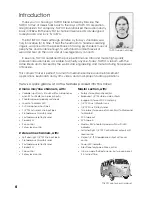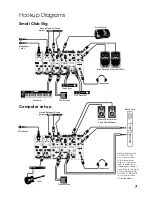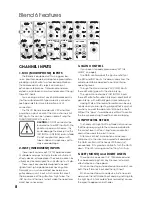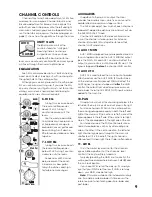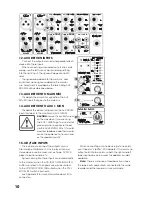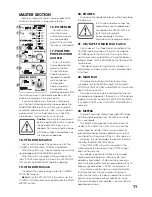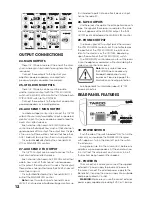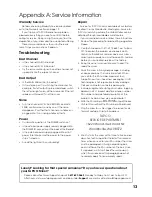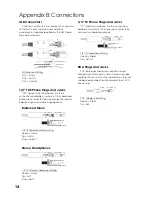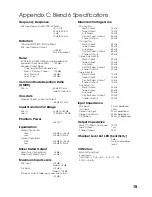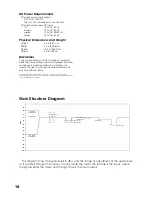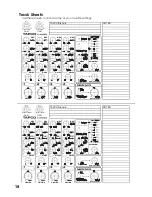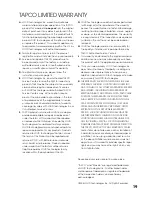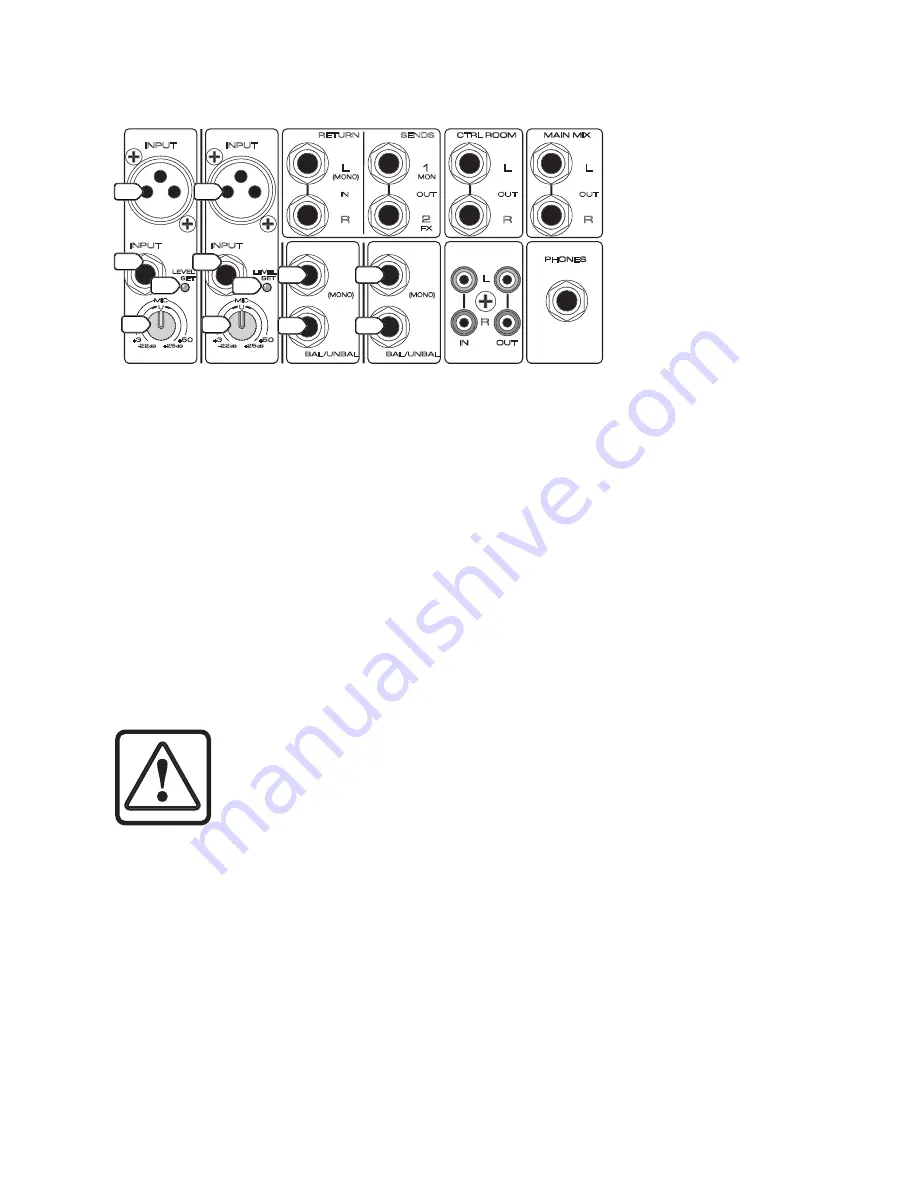
8
Blend 6 Features
CHANNEL INPUTS
1. MIC (MICROPHONE) INPUTS
The Blend 6 is equipped with two rugged, low-
noise, phantom-powered microphone preamplifi ers,
providing up to 50 dB of crystal-clear amplifi cation.
Their balanced circuitry rejects all manner of
extraneous interference. Professional condenser,
dynamic, and ribbon mics all sound excellent through
these XLR inputs.
You can plug in almost any kind of balanced mic
that has a standard XLR-type male mic connector.
See Appendix B for more information on XLR
connectors.
The TAPCO Blend 6 pr48 VDC phantom
powering on pins 2 and 3 of the mono channels’ XLR
MIC inputs. This can be turned on and off using the
PHANTOM POWER (17) switch.
CAUTION:
DO NOT connect a line-
level device to a MIC input with the
phantom power switched on. This
could damage the device. Use the
INST IN (2) or LINE IN (5) jacks instead.
Do not use phantom power with
tube or ribbon microphones, as this
may cause damage.
2. INST (INSTRUMENT) INPUTS
These inputs can accept 1/4" TRS balanced and
TS unbalanced plugs from any line-level instrument,
effects device, or tape player. They can be driven by
virtually any line-level signal, from –45 dBu up to +18 dBu.
These inputs are specially designed to accept
signals from high-impedance pickups on guitars.
Normally, you must use a direct box between a
guitar and a mixer’s input, which serves to convert
the impedance of the guitar from high to low. The
INST inputs on Channels 1 and 2 make the need for a
direct box unnecessary.
3. GAIN CONTROL
If you haven’t already, please read “SET THE
LEVELS” on page 4.
The GAIN control adjusts the input sensitivity of
the MIC and INST inputs. This allows signals from the
outside world to be adjusted to optimal internal
operating levels.
Through the mono channels’ MIC (XLR) inputs,
there is 50 dB of gain with the knob fully up.
Through a mono channels’ INST IN (TRS) inputs,
there is 22 dB of attenuation fully down and 25 dB of
gain fully up, with a
U
(unity gain) mark halfway up.
Having 22 dB of line-level attenuation can be very
handy when you are injecting a signal that is very hot,
or when you want to add a lot of EQ boost, or both.
Without this “pad,” it would be very diffi cult to control
the line signal and might lead to channel clipping.
4. INPUT LEVEL SET LED
This handy LED (Light Emitting Diode) lets you know
that the signals going into the mixer are adjusted to
the correct level, not too strong to cause distortion
and not too weak to be lost in noise.
After you connect a microphone or line-level
component to the mixer, do a sound test and adjust
the GAIN control until this handy LED fl ickers just
occasionally. If it is glowing constantly, turn the GAIN
down. If the LED is doing almost nothing, turn it up.
5. LEFT (MONO) and RIGHT LINE IN
These inputs can accept 1/4" TRS balanced and
TS unbalanced plugs from any line-level instrument,
effects device, or tape player.
When connecting a stereo device (two cords), use
both the left (mono) input and the right input.
When connecting a mono device (just one cord),
always use the left (mono) input and plug nothing into
the right input. A trick called “jack normalling” causes
the signal to appear on both sides.
���
��� ������
�
�
�������
���
��� ������
�
�
�������
�
�
�
����
�
�
����
�
���
�����
���
�����
����
�����
��
���
�
�
������
�
�
�
�
�
���
�������
��
���
���
���
�������
��������
������
���
��
���
��� ����
�
����
�
�
�����
���
����
����
�����
�
���
��
���
��
�
�
�
��
���
�����
���
����
�
���
��
���
��
�
�
�
��
���
�
�
���
��
���
1
1
2
�����
2
4
4
3
3
5
5
5
5


